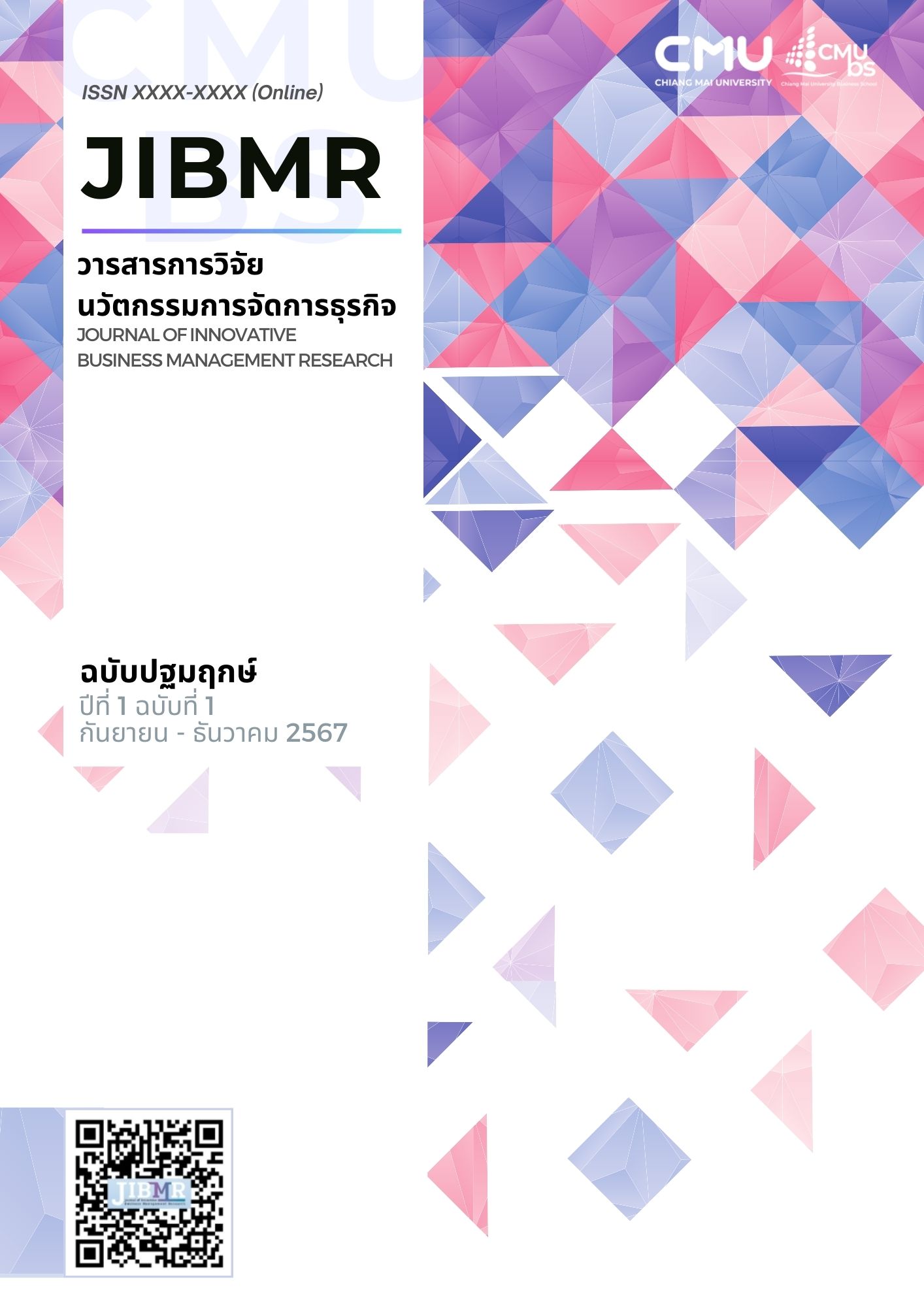ผลกระทบของช่วงสิ้นสุดระยะเวลาห้ามขายหลักทรัพย์เสนอขายครั้งแรกต่อประชาชนต่อผลตอบแทน ในตลาดหลักทรัพย์แห่งประเทศไทย
คำสำคัญ:
ผู้ถือหุ้นที่มีส่วนร่วมในการบริหาร, ข้อมูลข่าวสารที่เผยแผ่สู่สาธารณะ, ช่วงสิ้นสุดระยะเวลาห้ามขาย หลักทรัพย์, ช่วงระยะเวลาข้อตกลงห้ามขายหลักทรัพย์, อัตราผลตอบแทนผิดปกติ, อัตราผลตอบแทนผิดปกติสะสมบทคัดย่อ
การศึกษาผลกระทบของอัตราผลตอบแทนในช่วงสิ้นสุดระยะเวลาห้ามขายหลักทรัพย์ หลังการเสนอขายหุ้นสามัญต่อประชาชนทั่วไปครั้งแรก (IPO) ในแต่ละอุตสาหกรรมในประเทศไทย มีวัตถุประสงค์เพื่อวิเคราะห์ความไม่สมดุลของข้อมูลในช่วงสิ้นสุดระยะเวลาห้ามขายหลักทรัพย์ โดยใช้วิธีการศึกษาเหตุการณ์ เพื่อทดสอบอัตราผลตอบแทนผิดปกติเฉลี่ยและอัตราผลตอบแทนผิดปกติสะสมเฉลี่ย โดยช่วงการวิเคราะห์แบ่งออกเป็นสองเหตุการณ์ตามเงื่อนไขของข้อตกลงห้ามขายหุ้นสามัญออกใหม่ เหตุการณ์แรกคือการอนุญาตให้ผู้ถือหุ้นที่มีส่วนร่วมในการบริหารสามารถขายหุ้นสามัญได้ร้อยละ 25 ภายใต้ข้อตกลงการห้ามขายหุ้นสามัญออกใหม่ ส่วนเหตุการณ์ที่สองหรือสุดท้ายคือการอนุญาตให้ผู้ถือหุ้นที่มีส่วนร่วมในการบริหารสามารถขายหุ้นสามัญทั้งหมดภายใต้เงื่อนไขได้ โดยการวิเคราะห์อ้างอิงจากข้อมูลของบริษัทจำนวน 433 บริษัทที่จดทะเบียนระหว่างปี 2546 ถึงวันที่ 30 มิถุนายน 2564 ในตลาดหลักทรัพย์แห่งประเทศไทย และตลาดหลักทรัพย์เอ็มเอไอ ซึ่งผลการศึกษาชี้ให้เห็นว่านักลงทุนสามารถเข้าถึงข้อมูลในเหตุการณ์สุดท้ายได้ดีกว่าเหตุการณ์แรก นอกจากนี้พบว่า บริษัทขนาดเล็กที่จดทะเบียนในตลาดหลักทรัพย์เอ็มเอไอ มีช่องว่างในเข้าถึงหรือรับรู้ข้อมูลข่าวสารมากกว่าบริษัทขนาดใหญ่ที่จดทะเบียนในตลาดหลักทรัพย์แห่งประเทศไทย ซึ่งสรุปได้ว่าการศึกษานี้สอดคล้องกับสมมติฐานของตลาดที่มีประสิทธิภาพในช่วงสิ้นสุดระยะเวลาห้ามขายหลักทรัพย์ แต่ยังคงพบความไม่มีประสิทธิภาพของตลาดในบางภาคอุตสาหกรรม เช่นในอุตสาหกรรมเทคโนโลยีและอุตสาหกรรมสินค้าอุตสาหกรรมที่จดทะเบียนในตลาดหลักทรัพย์แห่งประเทศไทย และอุตสาหกรรมเกษตรและอาหารในตลาดหลักทรัพย์เอ็มเอไอ นอกจากนี้ยังพบอัตราผลตอบแทนเชิงลบในทุกอุตสาหกรรมตลาดหลักทรัพย์แห่งประเทศไทย อย่างไรก็ตามการศึกษาไม่พบการเปลี่ยนแปลงที่มีนัยสำคัญทางสถิติ ที่มีผลต่อการคาดการณ์ราคาหลักทรัพย์ ยกเว้นผลเชิงบวกในอุตสาหกรรมอสังหาริมทรัพย์และการก่อสร้าง
ซึ่งโดยรวมแม้ว่าตลาดจะแสดงถึงความมีประสิทธิภาพ แต่ยังพบความไม่มีประสิทธิภาพในบางอุตสาหกรรมเนื่องจากความไม่สมดุลของข้อมูล ที่ส่งผลต่อการตัดสินใจในการลงทุน
เอกสารอ้างอิง
Ball, R., & Brown, P. (1968). An Empirical Evaluation of Accounting Income Numbers. Journal of Accounting Research, 6(2), 159-78.
Barber, B. M., & Lyon, J. D. (1997). Detecting Long-run Abnormal Stock Return: The Empirical Power and Specification of Test Statistics. Journal of Financial Economics, 43(3), 341-372.
Bradley, D. J., Jordan, B. D., Rotan, I., & Yi, H. (2001). Venture Capital and IPO Lockup Expiration: An Empirical Analysis. Journal of Financial Research, 24(4), 465-492.
Brau, J. C., Carter, D. A., Christophe, S. E., & Key, K. G. (2004). Market Reaction to The Expiration of IPO Lockup Provisions. Managerial Finance, 30(1), 75-91.
Brav, A., & Gompers, P. A. (2003). The Role of Lockups in Initial Public Offerings. Review of Financial Studies, 16(1), 1-29.
Brown, J., & Warner, B. (1985). Using Daily Stock Return: The Case of Event Studies. Journal of Financial Economics, 14(1), 3-31.
Chakpaisan, P. (2012). Stock Reaction to the expiration of silent period evidence from the stock exchange of Thailand (Independent study, Thammasat University). Retrieved January 22, 2024, from https://digital.library.tu.ac.th/tu_dc/frontend/Info/item/dc:110136
Disara, S. (2007). Stock Reaction to the Expiration of IPO Lockup Period: Evidence in Thailand (Master thesis, Thammasat University). Retrieved January 22, 2024, from https://digital.library.tu.ac.th/tu_dc/frontend/Info/item/dc:125556
Fama, E. F. (1970). Efficient Capital Market: A Review of Theory and Empirical Work. The Journal of Finance, 25(2), 28-30.
Fama, E. F., Fisher, L., Jensen, M. C., & Roll, R. (1969). The Adjustment of Stock Prices to New Information. International Economic Review, 10(1), 1-21.
Field, L. C., & Hanka, G. (2001). The Expiration of IPO Share Lockups. The Journal of Finance, 56(2), 471-500.
Haggard, K. S., & Xi, Y. (2017). IPO Overvaluation and Returns Prior to Lockup Expiration. Managerial Finance, 43(12), 1392-1410.
Hakim, T. (2010). IPO Lockup Expiration in the Middle East and North Africa Region (Master thesis, Concordia University). Retrieved January 22, 2024, from https://spectrum.library.concordia.ca/id/eprint/979199/
Hirshleifer, J. (1970). Investment, Interest, and Capital. New York: Prentice-Hall.
Jensen, M. C., & Meckling, W. H. (1976). Theory of the Firm, Managerial Behavior, Agency Costs and Ownership Structure. Journal of Financial Economics, 3(4), 305-360.
Ofek, E., & Richardson, M. (2000). The IPO Lock-up Period: Implications for Market Efficiency and Downward Sloping Demand Curves (Stern School of Business, New York University Working Papers 99-054). New York: New York University.
Sum, M. Y. (2009). Information Flow and Trading Dynamics: A Theoretical Approach. Journal of Business and Economics Research, 7(4), 33-50.
Tabtieng, N. (2020). A Survey of Capital Reduction to Compensate the Deficitin Retained Earnings and its Impact on Financial Statements of Listed Companies in Thailand. NIDA Business Journal, 27, 28–59.
Talans, L., & Minardi, A. M. A. F. (2020). Behavior of Stock Prices due to the Lock-up Period Expiration in IPOs and Follow-ons. Revista Contabilidade & Finanças, 32(86), 331-344.
Zameni, A., & Yong, O. (2017). Substantial Shareholders and Their Trading Behaviour around Lock-Up Expiry: Evidence from Emerging Markets. Capital Markets Review, 25(1), 1-18.
Zhou, L. (2017). The Empirical study on the Relationship of IPO Lockup, Earnings Management and Venture Capital. Modern Economy, 8, 1082-1097.
ดาวน์โหลด
เผยแพร่แล้ว
รูปแบบการอ้างอิง
ฉบับ
ประเภทบทความ
สัญญาอนุญาต
ลิขสิทธิ์ (c) 2025 วารสารการวิจัยนวัตกรรมการจัดการธุรกิจ

อนุญาตภายใต้เงื่อนไข Creative Commons Attribution-NonCommercial-NoDerivatives 4.0 International License.
บทความที่ได้รับตีพิมพ์เป็นลิขสิทธิ์ของวารสาร



